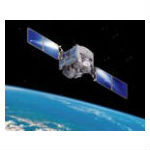 The U.S. market is poised to have access to an expanding range of lower-latency broadband and communications services delivered from non-geostationary orbit (NGSO) satellites, as a range of items adopted by the FCC today illustrates. Importantly, the commission authorized three non-U.S. companies to offer U.S. NGSO satellite services and authorized U.S.-based SpaceX to deploy and operate a NGSO satellite constellation offering broadband service around the world.
The U.S. market is poised to have access to an expanding range of lower-latency broadband and communications services delivered from non-geostationary orbit (NGSO) satellites, as a range of items adopted by the FCC today illustrates. Importantly, the commission authorized three non-U.S. companies to offer U.S. NGSO satellite services and authorized U.S.-based SpaceX to deploy and operate a NGSO satellite constellation offering broadband service around the world.
In recent months, the commission has approved a total of 13 market access requests and nine satellite applications involving NGSO satellites, noted FCC Chairman Ajit Pai at today’s monthly FCC meeting, where the new authorizations were adopted.
U.S. NGSO Satellite Options
Satellite broadband is often the only broadband option in remote areas, but traditional offerings based on high-altitude geostationary satellites have greater latency than terrestrial options. NGSO satellites typically operate in lower earth orbits (LEOs) and have less latency because they are closer to the earth, but more satellites are needed to provide the same coverage that a single geostationary satellite can provide.
As satellite technology has advanced, however, numerous companies now see an opportunity to offer low-latency service based on NGSOs.
The three non-U.S. companies that will now be allowed to offer NGSO service in the U.S. are Kepler Communications and Telesat Canada, both Canada-based, along with LeoSat, company that will operate under an International Telecommunications Union filing from France and a planned authorization from the Netherlands. Telesat and LeoSat offer satellite broadband services, while Kepler is focused on Internet of Things connectivity.
U.S.-based SpaceX, which is now authorized to deploy more than 7,000 satellites using V-band frequencies, was founded by entrepreneur Elon Musk and may be best known for rocket launches. The company was also authorized to add the 37.5-42 GHz and 47.2-50.2 GHz frequency bands to a previously authorized NGSO constellation.
Considering the vastly expanding number of satellites that will soon be orbiting the earth, sustainability-minded people will be pleased to learn that the FCC also adopted new rules aimed at mitigating orbital debris in what the commission called “the New Space Age.”
In related actions, the FCC also today adopted two notices of proposed rulemaking.
One of the NPRMs seeks comment on a proposal to create a regulatory framework for NGSO satellites to communicate with earth stations in motion (ESIMs) that would be similar to the framework used for geostationary satellites. The other proposes to eliminate certain satellite operator filings and to create an optional single license for space stations and earth stations operating in geostationary network. The stated goal for both NPRMs is to encourage the launch of new satellite systems.


